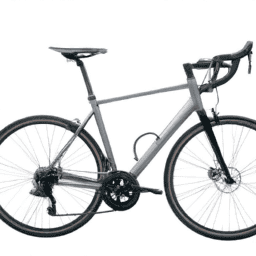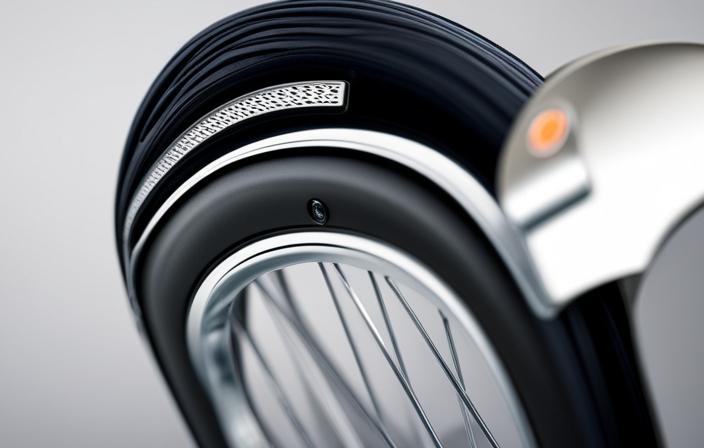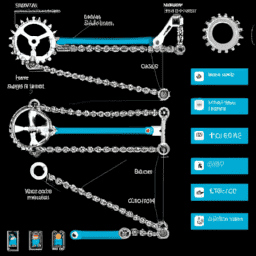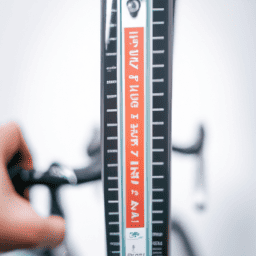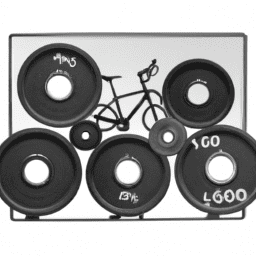As I cycle along the road, feeling the breeze sift through my hair, it brings to mind the sense of liberty and pleasure derived from biking. No matter if you ride occasionally or are a dedicated cyclist, choosing the perfect bike can greatly enhance your riding experience.
But with so many options available, it can be overwhelming to determine how much a good bicycle should cost. In this article, I will explore the factors that affect the cost of a bicycle, the price ranges you can expect to see, and where to buy a bicycle that fits your needs and budget.
Whether you’re looking for a leisurely ride through the park or training for a long-distance race, understanding the cost of a good bicycle is an important step in making an informed investment in your cycling journey. So, let’s dive in and explore the world of bicycles and their associated costs.
Key Takeaways
- The cost of a bike is affected by factors such as the type, materials used, brand reputation, customization options, and features.
- When choosing a bike, it is important to determine needs and preferences, consider brand reputation, budget for initial investment, and consider cost per use.
- Buying options include local bike shops, online retailers, and second-hand options, each with their own advantages.
- Investing in a high-quality bike can provide benefits such as lower cost of use in the long run, better components and features, higher resale value, and more durability and reliability.
Determine Your Needs and Preferences
Figuring out what you want and need in a bike can be like digging for treasure, but it’s worth it to strike gold with the perfect ride.
Start by considering what type of cycling you plan to do. Are you a casual rider who will mostly use the bike for short trips around town, or are you looking to tackle more challenging terrain on long rides? Knowing your intended use will help you determine the type of bike you need, as well as any customization options you may want to consider.
Another important factor to consider is brand reputation. While there are many bike brands out there, not all are created equal. Look for brands that have a reputation for quality, durability, and good customer service.
Doing your research on brand reputations can help you make an informed decision when it comes to choosing a bike that will meet your needs and stand the test of time. Understanding these factors is critical to understanding the price range for the bike that will meet your needs.
Understanding the Price Range
When considering the price range, it’s important to keep in mind the budget considerations and quality versus price trade-offs. Buying a bike can be a significant investment, and the cost can vary depending on the type and features.
Here are four different price ranges for different types of bikes:
-
Budget bikes: These bikes can cost between $200 and $500 and are suitable for casual riders who are looking for a basic bike for leisurely rides around the neighborhood. They may not have all the advanced features of a high-end bike, but they are reliable and can still provide a decent riding experience.
-
Mid-range bikes: These bikes can cost between $500 and $1,000 and are suitable for more serious riders who want a bike for fitness and commuting. They often have more advanced features, such as better suspension, gears, and brakes, but still provide good value for money.
-
High-end bikes: These bikes can cost between $1,000 and $4,000 and are suitable for experienced riders who want a bike for racing or serious mountain biking. They have all the advanced features and are made with high-quality materials, making them durable and high-performing.
-
Custom bikes: These bikes can cost upwards of $4,000 and are suitable for riders who want a bike that is customized to their exact specifications. They are made with the highest quality materials and often have unique designs and features.
Understanding the price range is just one of the factors that affect the cost of a bike. Other factors include the type of bike, the materials used, and the brand. By considering all of these factors, you can make an informed decision about the bike that’s right for you.
Factors that Affect the Cost
To get the most value out of your bike purchase, you should consider the various factors that influence its price. Customization options can significantly increase the cost of a bike. Features such as carbon fiber components, high-end suspension systems, and electronic shifting can all drive up the price. However, these features may not be necessary for every rider. So, it’s important to consider your own needs and preferences when deciding how much to spend.
Another factor that can affect the cost of a bike is brand reputation. Established brands with a history of quality and innovation often command higher prices because they’ve built a loyal customer base. However, it’s important to note that lesser-known brands can also offer high-quality bikes at a lower cost. Ultimately, the key is to do your research and find a bike that meets your specific needs and budget.
With that in mind, let’s explore where to buy your new bike.
Where to Buy
When it comes to buying a bicycle, there are several options to consider. As someone who’s purchased multiple bicycles over the years, I’ve found that the three most common options are local bike shops, online retailers, and second-hand options.
Each option has its own advantages and disadvantages, and it’s important to weigh these factors before making a decision on where to buy your next ride.
Local Bike Shops
Visiting a local bike shop is a great way to find a quality bicycle and get personalized advice from knowledgeable staff. As someone who values bike shop loyalty and community events, I always prioritize supporting my local bike shop.
Not only do they offer a diverse range of bicycles and accessories, but the staff members are passionate about cycling and can provide expert recommendations based on your needs and preferences.
In addition to their extensive inventory, local bike shops often host community events that bring together fellow cyclists. From group rides to repair workshops, these events provide a space to connect with like-minded individuals and learn new skills.
Plus, by supporting your local bike shop, you’re investing in your community and promoting sustainable transportation options. While online retailers may offer convenience and lower prices, nothing beats the personalized service and community engagement of a local bike shop.
Online Retailers
While local bike shops are great for getting personalized advice and test-riding bikes, sometimes it’s more convenient to shop online. In fact, I’ve found that online retailers often have a wider selection of bikes and can offer more competitive prices. However, it’s important to do your research before making a purchase.
One thing to consider when shopping online is shipping costs. Some retailers offer free shipping, while others may charge a hefty fee depending on the size and weight of the bike. It’s also important to look into the retailer’s return policy in case the bike doesn’t fit or meet your expectations.
Overall, online shopping can be a great option for finding a good bike at a reasonable price, but it’s important to be cautious and informed before making a purchase.
As I mentioned earlier, one alternative to buying a new bike is to look for second-hand options. This can be a great way to save money while still getting a quality bike. However, it’s important to be even more cautious when buying used.
In the next section, I’ll discuss some tips for finding and evaluating used bikes.
Second-Hand Options
Looking for a used bike can be a great option for those wanting to save money on their purchase. However, there are pros and cons to consider when going this route.
On one hand, buying a used bike can save you a lot of money, as second-hand options are often significantly cheaper than new ones. Additionally, purchasing a used bike can be a more sustainable choice, as it keeps a bike out of the landfill and reduces the demand for new ones to be produced.
On the other hand, buying a used bike requires a bit more research and knowledge than buying a new bike. You’ll need to inspect the bike thoroughly for any damage or wear and tear, and be aware of any potential safety concerns. It’s also important to know what you’re looking for in terms of size, style, and features, as the selection of used bikes may be more limited than that of new ones.
Overall, if you’re willing to put in the time and effort to find a good used bike, it can be a great way to save money while still getting a quality ride. With these tips and tricks in mind, you can make an informed decision about whether a used bike is right for you before making the investment in a new one.
Making the Investment
Investing in a high-quality bicycle may seem expensive at first, but the long-term benefits outweigh the initial cost. As someone who’s gone through the process of buying a bicycle, I can attest that it’s worth it to spend a little extra money to get a bike that will last longer and perform better.
However, before making the investment, it’s important to consider budgeting tips and financing options to ensure that you’re getting the best deal possible. One budgeting tip is to consider the cost per use. A more expensive bike may seem like a lot upfront, but if you plan on using it regularly, the cost per use will ultimately be lower than a cheaper bike that will require more maintenance and repairs.
Additionally, many bike shops offer financing options, allowing you to spread out the cost of the bike over time. This can be a good option if you don’t have the full amount upfront, but make sure to read the terms and conditions carefully to avoid high interest rates.
Overall, investing in a high-quality bike is a smart decision that will pay off in the long run.
Frequently Asked Questions
What are the most important features to look for when purchasing a high-end bicycle?
When purchasing a high-end bicycle, it’s important to consider customization options, such as frame material and component selection, as well as performance considerations like weight and aerodynamics. These factors can greatly impact the overall experience and enjoyment of riding.
How much should I expect to spend on additional accessories such as helmets and locks?
Lock up your bike with confidence using advanced locking techniques and choose from a variety of helmet styles for ultimate protection. Depending on your preferences, expect to spend anywhere from $50 to $200 on these essential accessories.
Are there any financing options available for purchasing a high-end bicycle?
When it comes to purchasing a high-end bicycle, there are bicycle financing options available. However, credit score requirements may vary depending on the lender. It’s important to do your research and compare different financing options before making a decision.
How often should I expect to replace parts on my bicycle, and what is the cost of replacement?
Regular maintenance can prevent common wear and tear on bicycle parts, extending their lifespan. DIY repairs can be cost-effective, with replacement parts ranging from $10 for a chain to $100+ for a wheel. Professional servicing can cost upwards of $50 per hour.
Are there any maintenance costs associated with owning a high-end bicycle, and how do those costs compare with owning a lower-priced bicycle?
Regular maintenance is crucial for a bike’s longevity, regardless of its price. However, high-end bikes may require more expensive maintenance. Comparing maintenance costs between high-end and low-end bikes, the former may cost more in the long run.
Conclusion
So, how much does a good bicycle cost? The answer ultimately depends on your needs, preferences, and budget. However, it’s important to understand that a high price tag doesn’t always equate to a better bike.
You can find a quality bicycle within a reasonable price range if you know what to look for and where to buy. On the other hand, if you’re a serious cyclist or have specific requirements, investing in a higher-end bike may be worth it.
Factors such as materials, components, and brand can significantly affect the cost. Ultimately, it’s about finding the right balance between quality and affordability.
So, whether you’re a beginner or a seasoned rider, take the time to research and evaluate your options before making a decision. A good bicycle is an investment that can last for years, and with the right knowledge, you can find one that suits your needs and budget.
